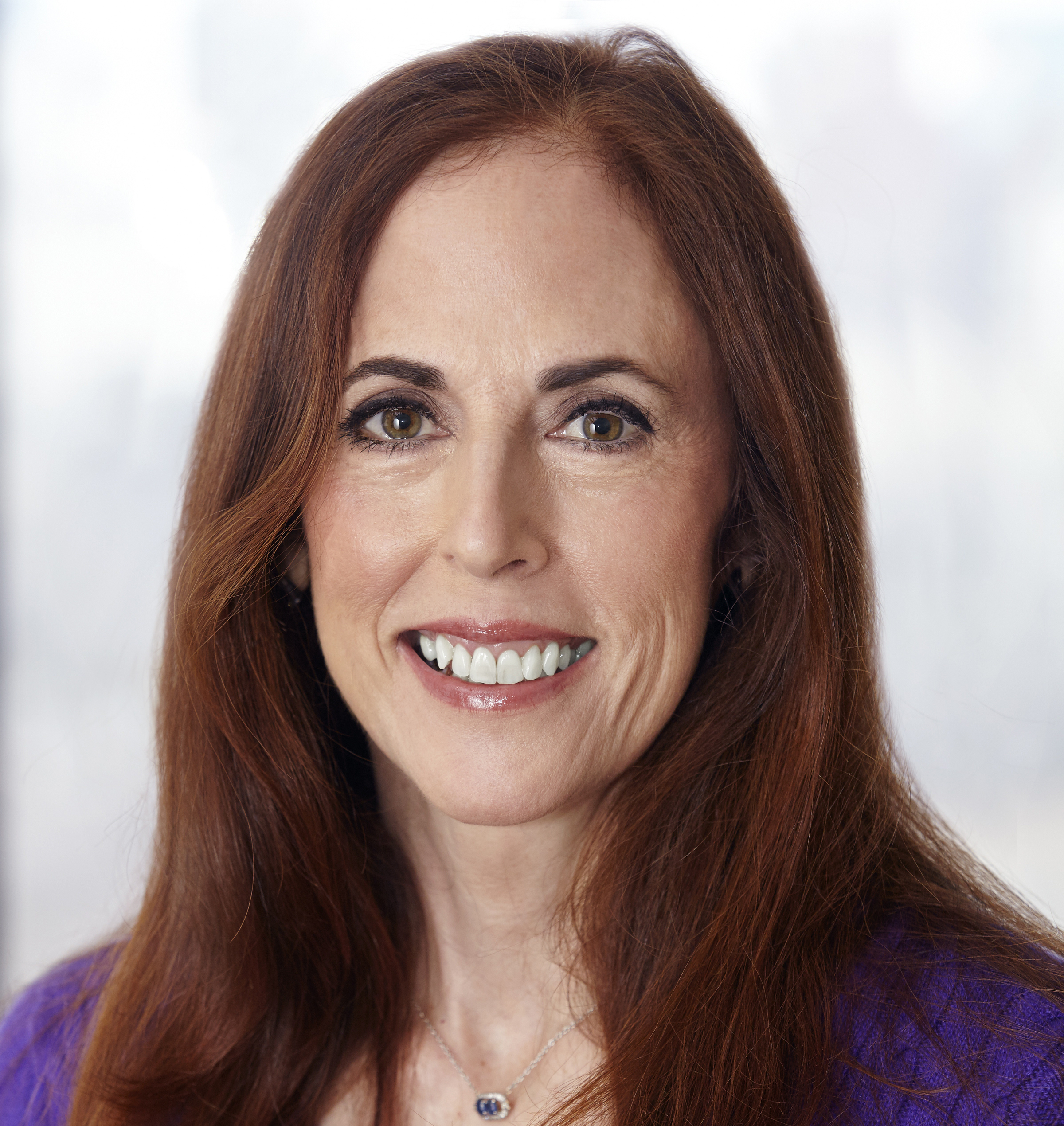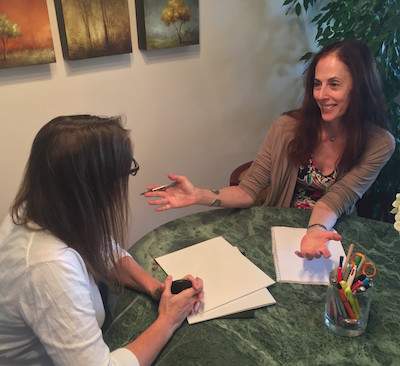 Who could envision a person with autism becoming a social butterfly? Almost no one, except me— Samantha Elisofon’s mother (and the parents of some of Samantha’s friends on the spectrum). My daughter, bless her gigantic heart, is busy all the time with her various different and overlapping groups of friends. Samantha has buddies—both old and new—from the JCC’s Adaptations Program for adults with disabilities attending various events from drama therapy to Match Konnections. She also has friends from her theater groups. At EPIC Players, she meets and interacts with talented and aspiring actors (with and without disabilities). She is always
Who could envision a person with autism becoming a social butterfly? Almost no one, except me— Samantha Elisofon’s mother (and the parents of some of Samantha’s friends on the spectrum). My daughter, bless her gigantic heart, is busy all the time with her various different and overlapping groups of friends. Samantha has buddies—both old and new—from the JCC’s Adaptations Program for adults with disabilities attending various events from drama therapy to Match Konnections. She also has friends from her theater groups. At EPIC Players, she meets and interacts with talented and aspiring actors (with and without disabilities). She is always  auditioning, rehearsing and performing in shows and cabarets; or else she’s attending classes with friends and dining out with them afterwards. In spite of the fact that Samantha has no job, she manages to remain “a busy bee,” as she likes to say, all week long. Sometimes I think Samantha has more friends than I do—certainly on Facebook—and I’m a neurotypical who has lived more than twice as long as my daughter.
auditioning, rehearsing and performing in shows and cabarets; or else she’s attending classes with friends and dining out with them afterwards. In spite of the fact that Samantha has no job, she manages to remain “a busy bee,” as she likes to say, all week long. Sometimes I think Samantha has more friends than I do—certainly on Facebook—and I’m a neurotypical who has lived more than twice as long as my daughter.
Samantha was not always a friend magnet. Quite the contrary. During her childhood, my daughter’s limited interests, difficult behavior, and meltdowns made it very difficult for her to make and sustain friendships. Occasionally, I still have nightmares about Samantha screaming in nursery school as I wheel her stroller through a lobby full of parents and kids who part like the Red Sea as we approach. Although she had few friends in elementary and middle school, Samantha always longed to be popular like her brother. Burning with envy, she watched her neurotypical twin brother enjoying play dates, sleep overs and invitations to countless parties, while she stayed home with her parents. Although Samantha had no idea how to make or be a friend, she yearned for the easy relationships with peers that she saw her twin brother enjoying.
“How come Matt has many so friends and goes on sleep overs and I never do?” She used to lament.
Answering this question was nearly impossible and almost too painful to remember. “One day you will have friends,” I promised, without knowing if I was the telling truth or just expressing my hope.
Fortunately, nearly 2 decades later, Samantha has cultivated an active social life including a variety of beloved friends. This did NOT happen overnight. Samantha attended more schools than most: Epiphany Community Nursery School, The Parkside School, The Star Program, The Child School and Winston Prep. My daughter also went to Landmark College for two and a half years for her Associates Degree, followed by another two and a half years at Pace University’s OASIS program where she graduated with a bachelor’s degree. There were only a scattering of friends during her early years. Her “play dates” and “hanging out” were rarely more than parallel play: swimming, bowling, watching a movie, doing crafts, but rarely conversing.
For parents of younger kids on the spectrum who are lonely (like my daughter used to be), there are no easy answers. But I DO have LOTS of suggestions. With younger children, I found it helpful to set up structured play dates with activities like those mentioned above. Caregivers will need to interact and model social behavior, even if it means being silly, to get kids to laugh together. As Samantha got older, she slowly developed interests; think: swimming, puzzles, crafts and later on, singing and theater. She gradually found other kids who shared her interests or admired her skills (knitting, crocheting and swimming). By the time my daughter reached high school, she’d made a slightly older male friend who shared her interest in theater and singing. This important first true friendship introduced Samantha to karaoke, shooting pool, and most significantly to a community of friends at the JCC.
While it’s true that Samantha’s many friends all have disabilities and are mostly on the spectrum, these young men and women accept each other and enjoy socializing just as much (or perhaps more!) than their neurotypical peers. These relationships have been hard won, and they come with fierce loyalty. While each person with autism or any learning disability is unique, what they all have in common is joy and appreciation for each other. My daughter’s friends might not read the newspaper, talk politics, or worry about global warming, but they crave companionship as much as neurotypical people do.
Deep conversations about abstract topics may not be a big part of my daughter’s relationships, but rest assured, her desire for intimate relationships and romance is alive and well. While most of Samantha’s friends have social challenges and quirks (Samantha included), they also tolerate a variety of these “differences” with compassion, in addition to appreciating each other’s strengths. My daughter still explodes if anyone calls her Sam or Sammy. And beware to anyone who dares to shush her or boss her around! But her friends accept her eccentricities, (even while she continues to work on them). Samantha’s friends also seek out her enthusiasm, warmth and positive energy. Nowadays she’s known for brightening the room with her big smile and for extending a kind welcome to new cast members and JCC participants.

 Hmm…in our hateful and divided world, maybe this is the moment for neurotypical people to learn about tolerance and compassion from social butterflies on the autism spectrum.
Hmm…in our hateful and divided world, maybe this is the moment for neurotypical people to learn about tolerance and compassion from social butterflies on the autism spectrum.





 Marguerite Elisofon is a New York City writer and the author of My Picture Perfect Family, a memoir about how her family navigated life with a child on the autistic spectrum before the internet and support groups existed. She also blogs about parenting young adults and disability related issues in The Never Empty Nest. Her writing has been featured in a variety of publications, including Time and NY Metro Parents magazine, and her family’s story has been featured by the NY Post, Fox News, The Daily Mail, and on Jenny McCarthy’s Dirty Sexy Funny radio show. A Vassar graduate, Marguerite was born and raised in New York City, where she still lives with her husband, Howard, in their mostly-empty nest. She is available to speak about a wide variety of issues relating to twins, parenting, and autism.
Marguerite Elisofon is a New York City writer and the author of My Picture Perfect Family, a memoir about how her family navigated life with a child on the autistic spectrum before the internet and support groups existed. She also blogs about parenting young adults and disability related issues in The Never Empty Nest. Her writing has been featured in a variety of publications, including Time and NY Metro Parents magazine, and her family’s story has been featured by the NY Post, Fox News, The Daily Mail, and on Jenny McCarthy’s Dirty Sexy Funny radio show. A Vassar graduate, Marguerite was born and raised in New York City, where she still lives with her husband, Howard, in their mostly-empty nest. She is available to speak about a wide variety of issues relating to twins, parenting, and autism. 
Samantha has grown into a social butterfly. I can see it every time I see her! It’s great seeing her happy everyday at jcc and around her closest friends.
That’s so nice to hear. Thank you.
Thank you for sharing this. I think social stuff is very difficult to manage
Yes it can get complicated.
Wonderful essay – wonderful Mom – I think of you both and am glad to hear of the full life Samantha leads – please send her love from me. To you too.
Lovely to hear from you, an early believer in Samantha. Sorry I didn’t see your comment sooner. So many I get are suggestions for how to advertise and monetize my blog, which I have to spend time putting in the “trash.” So glad you’ve been able to follow Samantha’s progress and hope you get to see Keep the Change. Sometimes it feels like a dream. I wish Stan Greenspan and Harry Wachs had lived to see this. I will send Samantha your love. We send ours back.